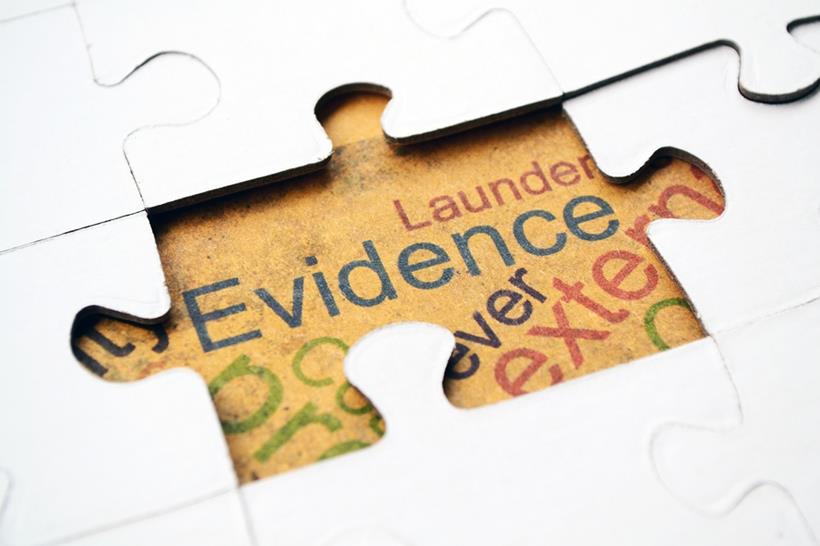
This article appeared in the August, 2012 issue of IQ – the Records and Information Management Professionals Australasia (RIM) Quarterly magazine. To download, click here: Roll Out! Roll Out! Get your successful EDRMS here!
Interview with Maria Kepreotes
We know that sponsors and stakeholders who believe in improved productivity and risk reduction from implementing an EDRMS have a significant positive impact on the implementation, and those who disbelieve have a fatal impact on success. We also know that involving general staff within the business in the project team and utilising the functionality of the EDRMS to align business processes with good recordkeeping practices heralds increased success rates.
In our quest to find successful EDRMS implementations and explore what makes them successful, the discovery of information management units which not only espouse these views but also practise them with a willing business partner has so far been difficult. It was a delight, therefore, to talk with Maria Kepreotes, Information Services Manager, NSW Crown Solicitor’s Office in the second of the series of interviews we are completing with effective EDRMS project and information managers. The Crown Solicitor’s Office sits within the Department of Attorney-General and Justice and it was no surprise to us when a few short weeks after the interview her team won the Department’s Annual Achievement Award for Innovation.
Executive buy in
The Crown Solicitor’s Office Executive understands their obligations with regard to keeping good records of legal matters. Doing so is seen as important. So much so that Maria’s role reports directly to the Executive. Her Information Services Unit is as much a part of practice management as any of the solicitors. The relationship between Maria’s unit and the Executive is such that when they have queries or misgivings, they call and ask questions and seek to understand records management rather than make assumptions.
At your service
When asked about what she saw as the purpose of the Information Services Unit, Maria was forthright, “We are here to provide a service to our clients so they can provide quality services to their clients. We try as much as is possible and sensible to offer our clients a choice of how they can access TRIM and use it.”
It’s a theme Maria returns to often during the interview, demonstrating a rare desire for an Information Services Unit to fully understand all aspects of the business needs and then design solutions which make it both easy for the users to access the functionality of their TRIM EDRMS and easy for the users to do their job. To that end, the Information Services Unit has in its ranks the positions of a Continuous Improvement Officer, a Policy and Procedures Officer and a Precedents Officer. A prime purpose of those roles is to collaborate with the business.
“Initially the person appointed to the position of Continuous Improvement Officer had a training background, which was advantageous to the Unit as they understood our clients’ knowledge of systems, having come from the Training Unit and especially having delivered extensive training to the Office. Over the last few years we have developed good relationships with the business and now the role is one which drives innovation in business processes,” Maria said. “The competencies required for the role have become more demanding over that time. To succeed in the role the person needs to have the ability to analyse processes, have technical acumen and be a good negotiator. They also need to be able to manage the change process within the business.”
The interest of the unit in the business and the trust of the business in the unit is simply demonstrated by the ability of Maria to get interest in and approval for multiple business cases that have improved the capability of the unit and the Crown Solicitor’s Office overall.
Managing change
One might suspect, given the service orientation of the Information Services Unit and executive support it receives, that managing change might be quite simple. However, this is not quite so. Maria’s team still have to deal with people who have to give up their tried and true ways of working when introducing new methods.
The key according to Maria is “To provide at the end of the day a nice, user-friendly interface that makes the system easy for people to use.” The pre-TRIM system was a tree structure based on ’Matters’ and the initials of the solicitor handling the matters. Users were familiar with their directory structure and did not like moving to a search methodology for finding files. To ease the burden of change, a user-friendly interface was created which ‘hid’ TRIM from users and enabled users to quickly and simply search for their documents without having to learn new protocols. To get over the natural reluctance to accept change, users were shown how much faster searching was and how simple it was using the new system using their files. The ‘show me’ approach, rather than ‘tell me’, has become a standard approach to managing change.
Continuous improvement
According to Maria, information management has been a journey of continuous improvement at the Crown Solicitor’s Office. Since 2003 they have been making minor and major continuous improvements to the functionality of TRIM and business processes. This started with scanning of all new correspondence and embarking on a project to scan the Crown Solicitor’s reference collection. The collection included scanning old Crown Solicitor Advices, Opinions and Submissions back to 1945, converting a microfilm collection containing Advices and Opinions covering 1918 to 1934 into searchable PDF format and over 90,000 index cards allowing the electronic file to replace the physical file. The project is ongoing.
Another early advance for users was the automatic placement of the TRIM reference in the document footer and other metadata, such as the matter number, author and addressee in one simple registration process, thus minimising user input and error and enabling easy searches for the electronic copy. Improving the ability of solicitors to complete their work efficiently is the driver for much of what the Information Services Unit does.
Maria commented, “For example, one of our major challenges has been to do with emails. We have worked hard to provide tools for our solicitors to help them do their work. For example, we started years ago to develop a TRIM integration tool for emails, which registered multiple people’s emails to a particular legal matter. Then we worked on adding metadata without users having to do it. Now we are using linked folders so that users can drag and drop their emails into the appropriate TRIM container. In all, the time taken to register an email has reduced from 60 seconds or more to one second. We added 170,000 emails to TRIM between February and September 2010 and another 65,000 within three months.”
“By making the task of entering emails as a record in TRIM easy, we have been able move towards a situation where we will no longer have to print emails.”
“We have been invited to pilot the use of iPads so that we can have documents in TRIM available in court, ending the sight of solicitors hauling large briefcases and document boxes stuffed with hard copy documents.”
To ensure what they do is meeting the needs of their customers, the Information Services Unit completes a client survey every year and uses the feedback as input into future plans.
Interview with Kate Gunton
Previous experience in EDRMS implementations is now known to be a harbinger of success in subsequent programs, even when the initial implementation has not reached the desired goals. When Kate Gunton, Executive Manager – Property, presided over a project at Ausgrid to implement an EDRMS to 4,000 staff it was her drive that turned that previous experience into effective actions. The project success was noted by the awarding of the J Eddis Linton Award (Most Outstanding Group) for excellence and innovation in records management in 20102. It was also a finalist in the AITD 2011 National Training Excellence Awards; Best Implementation of a Blended Learning Solution. Kate is an architect by trade and when you talk to her, it is clear it is still her passion. Yet she sponsored and drove a highly successful EDRMS implementation. Her insights into the project offer a unique, and highly practical business oriented viewpoint of how to make people stand up and take not only notice, but action as well.
Opportunity
When asked about the catalyst for the program, Kate was frank, ”Records management was broken and it needed fixing. We had our burning platform. We were not meeting our own standards and we were faced at the time with the need to meet the 2012 digital recordkeeping standard. We would not have complied unless we changed things. That became our opportunity to rethink our software selection, our training approach, the configuration of our BCS and to develop robust recordkeeping policy and procedures.”
Key foundations
Kate uses a building analogy, establishing solid ‘foundations’ first as you would in the physical world of building, as she describes the five key foundations which needed to be in place for the project to be successful.
Foundation 1: Fit with systems architecture
“We didn’t care too much about what the software was; we left that to an arm’s length procurement process. What was important was that IT saw that the system chosen was robust, was going to be supported and would fit into the current systems architecture and also meet future architecture requirements. We chose TRIM for many reasons, but one was that it would provide a great back-end to future Electronic Content Management and Knowledge Management systems.”
Foundation 2: Executive buy-in
Another key foundation for Kate was the establishment of a steering committee with hand-picked representatives from the business that could be assured of giving clear and robust feedback. “It was important that we played people to their strengths and had both informed and robust feedback. We achieved that.”
An important point made by Kate was that it was never safe to assume that you had buy-in. It had to be earned by demonstrating the benefits to each business unit.
Foundation 3: Promotion
Kate is a great believer in the need to promote projects such as an EDRMS and good recordkeeping practices at every opportunity, even when at the early stages it was out of her comfort zone. She took on the responsibility of learning the benefits of an EDRMS rapidly and equipping herself and her team with collateral for consistent messages: presentations structured for different audiences, frequently asked questions and contingencies for anticipated questions of risk.
“There were several opportunities which presented themselves which if we were not ready would have meant we lost the opportunity to promote the project. For example, an audit of the self-insurance process created an opportunity to show how much easier it was to comply with requirements with an EDRMS in place. Without the collateral, the opportunity may well have been lost to clearly articulate and promote why the EDRMS rollout was going to benefit the stakeholders involved.
Foundation 4: Change management
The immensity of the change required was not lost on Kate. “To move from a mix of use of shared drives, team rooms in Lotus Notes, hard copies, scanned copies managed in inconsistent ways with inconsistent filing practices, security and naming conventions to a consistent approach of electronic records management that facilitated easy sharing of information and streamlined processes for managing information flow that increased productivity and reduced risk was a big ask. We needed a strong change management program, strong project management and clear leadership and sponsorship.“
Foundation 5: Communication
Kate’s architectural background came to the fore when she explained her thoughts on communication. “Architects are spatial thinkers. We think in a visual way. But I recognise that other people need to see things in different ways to me. It’s important that you use all the range of mediums and the range of learning experiences from experiential to self-paced. It’s also important that you always beat the drum, repeating the message as different people will ‘get it’ at different times and at different speeds.” Recordkeeping as a topic, I think we would all agree, is viewed as a boring topic by the uninitiated. Kate, as a records management outsider truly understood, and even agreed with this viewpoint, and actively sought ways to make the project stand out. This included the use of an internal brand and logo encapsulated as REX which was positioned as a helpful superhero who made life easier. It resonated with the audience and captured their attention and interest. “We used the logo in all communications including an intranet site, a desktop guide, posters, brochures, training materials and a range of promotion materials which we handed out at the superuser training. REX became synonymous with records management, and terms such as ‘rexcellence’ in records management became accepted as part of the normal language.”






